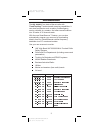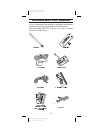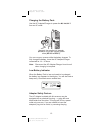In a trunked radio system, which contains up to 28 different
frequencies, radio users are divided into groups, often
called talk groups, and these talk groups are assigned
specific IDs. When someone in a talk group uses their
radio, a brief burst of data is broadcast before each
transmission. The trunking system computer uses this data
to temporarily assign each radio in a talk group to an
available frequency. If the group using a frequency stops
broadcasting or pauses between replies for a few seconds,
they are removed from the frequency so another talk group
can use it.
Sharing of the available public service frequencies, or
trunking, allows cities, counties, or other agencies to
accommodate hundreds of users with relatively few
frequencies. Following a conversation on a trunked system
using a scanner is difficult, if not impossible, because when
there’s a short break during the conversation you’re
monitoring, it’s possible that the talk group will be assigned
to a completely different frequency in the trunked system.
This type of scanning is difficult and frustrating.
TrunkTracker™ changes this! Not only does your new
BC 245XLT
scan channels like a conventional scanner, it
actually follows the users of a trunked radio system. Once
you know a talk group’s ID, you won’t miss any of the
action.
If you’re a new scanner enthusiast, you may want to read
the first part of this manual and use your scanner in
conventional mode before you begin trunk tracking.
Understanding scanning fundamentals and its terminology
will make trunk tracking much easier. But if you’re already
an experienced scanner operator, you may want to go to
Trunk Tracking on page 36 now.
6
C:\Manuals\BC245XLT\BC245XLT.VP
Tue Jun 15 11:01:35 1999
Color profile: Disabled
Composite Default screen


















